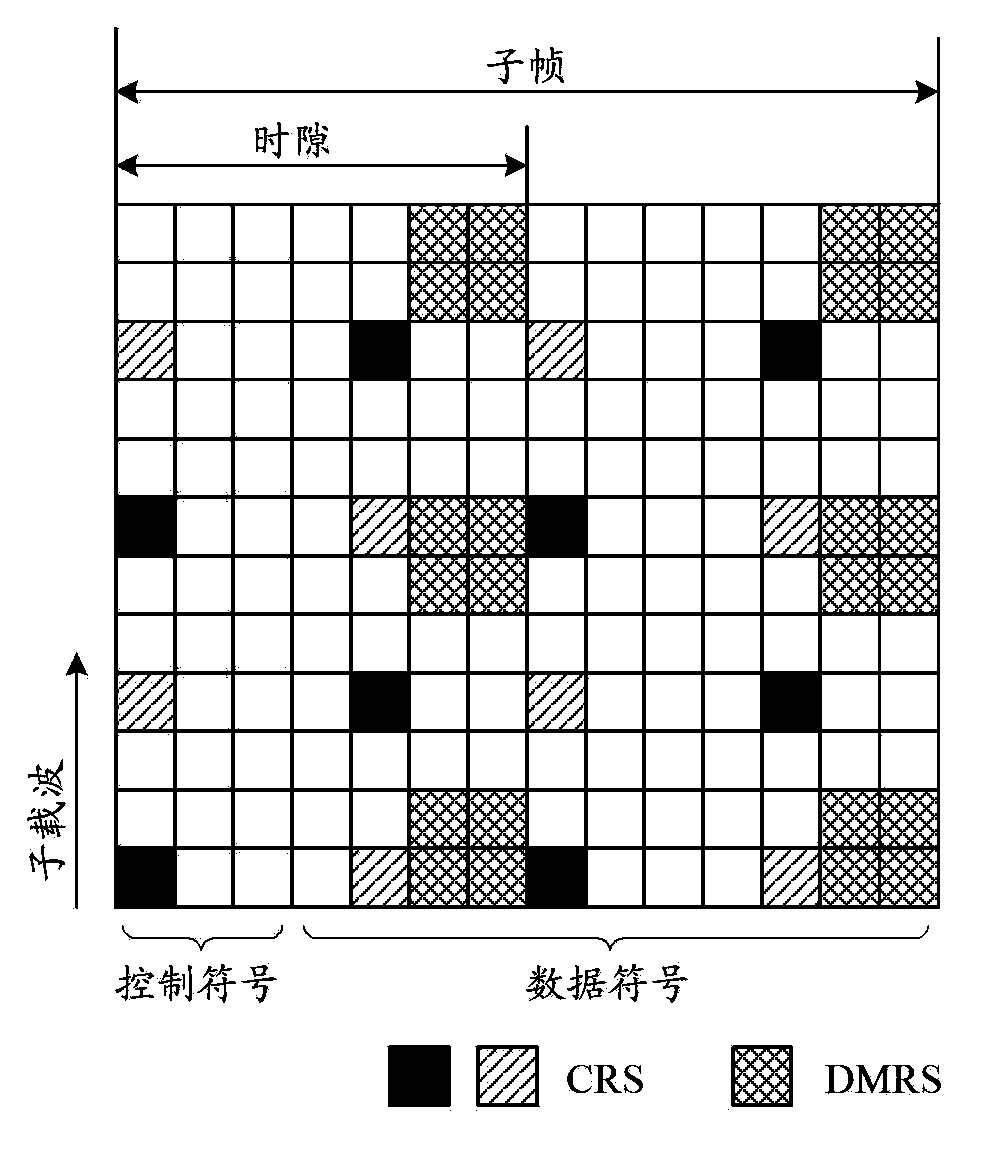Methods for transmitting synchronization channel and broadcast channel, methods for receiving synchronization channel and broadcast channel and apparatus
A technology of synchronous channel and synchronous signal, which is applied in the direction of synchronous device, transmission path sub-channel allocation, wireless communication, etc. It can solve problems such as initial access failure, achieve the effects of avoiding conflicts, increasing flexibility, and ensuring transmission performance
- Summary
- Abstract
- Description
- Claims
- Application Information
AI Technical Summary
Problems solved by technology
Method used
Image
Examples
Embodiment 1
[0116] It is assumed that the time-frequency structure of the DMRS and the time-frequency structure of the CSI-RS in the existing LTE version are reused, and the TRS is assumed to reuse the time-frequency structure of the existing CRS port 0. Here, for FDD and TDD systems, it is assumed that those OFDM symbols that can be used to carry CSI-RS in both systems are not used to transmit P-SCH or S-SCH. According to the method of the present invention, a new relative position of P-SCH and S-SCH different from the existing LTE system is introduced, and a consistent new relative position is adopted in the FDD and TDD systems of NCT.
[0117] Figure 6 A schematic diagram of a synchronization channel to a general CP frame structure is shown. In a general subframe, in order to avoid collision with OFDM symbols used for DMRS, CSI-RS and TRS, only OFDM symbols 1, 2, 3 of the first slot and OFDM symbol 1 of the second slot can be used to carry P-SCH and S-SCH. For the DwPTS of the TDD ...
Embodiment 2
[0121] It is assumed that the time-frequency structure of the DMRS and the time-frequency structure of the CSI-RS in the existing LTE version are reused, and the TRS is assumed to reuse the time-frequency structure of the existing CRS port 0. Here, for each duplex mode (FDD or TDD) system, it is guaranteed that all OFDM symbols available for CSI-RS are not used to transmit P-SCH or S-SCH. According to the method of the present invention, a new relative position of P-SCH and S-SCH different from the existing LTE system is introduced, and a consistent new relative position is adopted in the FDD and TDD systems of NCT.
[0122] Figure 8 A schematic diagram of a synchronization channel to a general CP frame structure is shown. For the TDD system, P-SCH and S-SCH are transmitted simultaneously in the DwPTS, and occupy OFDM symbols 0 and 1 of the DwPTS respectively. For FDD systems, such as Figure 8 As shown, the P-SCH and the S-SCH may respectively occupy OFDM symbols 1 and 2 ...
Embodiment 3
[0169] In the NCT system, for each P-BCH burst, the technical solution of the present invention ensures that the number of REs used for P-BCH transmission is close to or equal to that of the existing LTE system. That is to say, the NCT system of the present invention is consistent with the existing LTE system; and for the NCT system, it can transmit P-BCH on 4 OFDM symbols. Here, some REs in the 4 OFDM symbols may be used for other purposes, such as carrying TRS, and these REs used for other purposes will not be used for carrying P-BCH. Here, the P-BCH mapping structure may be independently designed for the FDD and TDD systems; or, in order to increase consistency, the same P-BCH mapping structure may be used in the FDD and TDD systems.
[0170] According to the design of the existing LTE system, for the general CP subframe structure of the FDD system, OFDM symbols 5, 6 in the first slot and OFDM symbols 2, 3, 5, 6 in the second slot can be used to transmit CSI -RS. Such as ...
PUM
 Login to View More
Login to View More Abstract
Description
Claims
Application Information
 Login to View More
Login to View More - R&D
- Intellectual Property
- Life Sciences
- Materials
- Tech Scout
- Unparalleled Data Quality
- Higher Quality Content
- 60% Fewer Hallucinations
Browse by: Latest US Patents, China's latest patents, Technical Efficacy Thesaurus, Application Domain, Technology Topic, Popular Technical Reports.
© 2025 PatSnap. All rights reserved.Legal|Privacy policy|Modern Slavery Act Transparency Statement|Sitemap|About US| Contact US: help@patsnap.com



